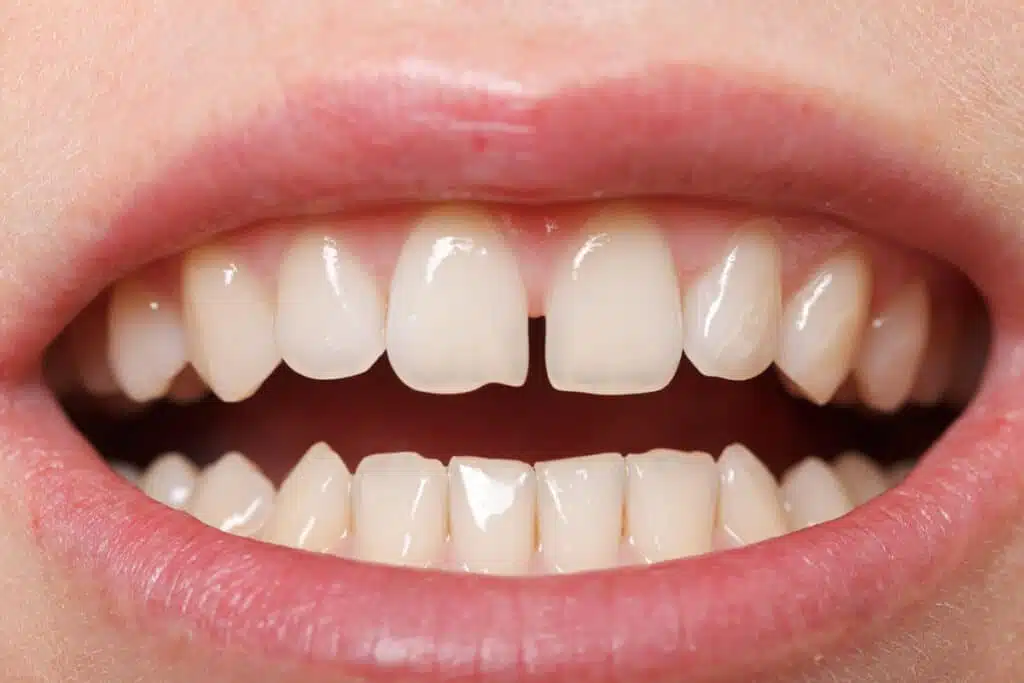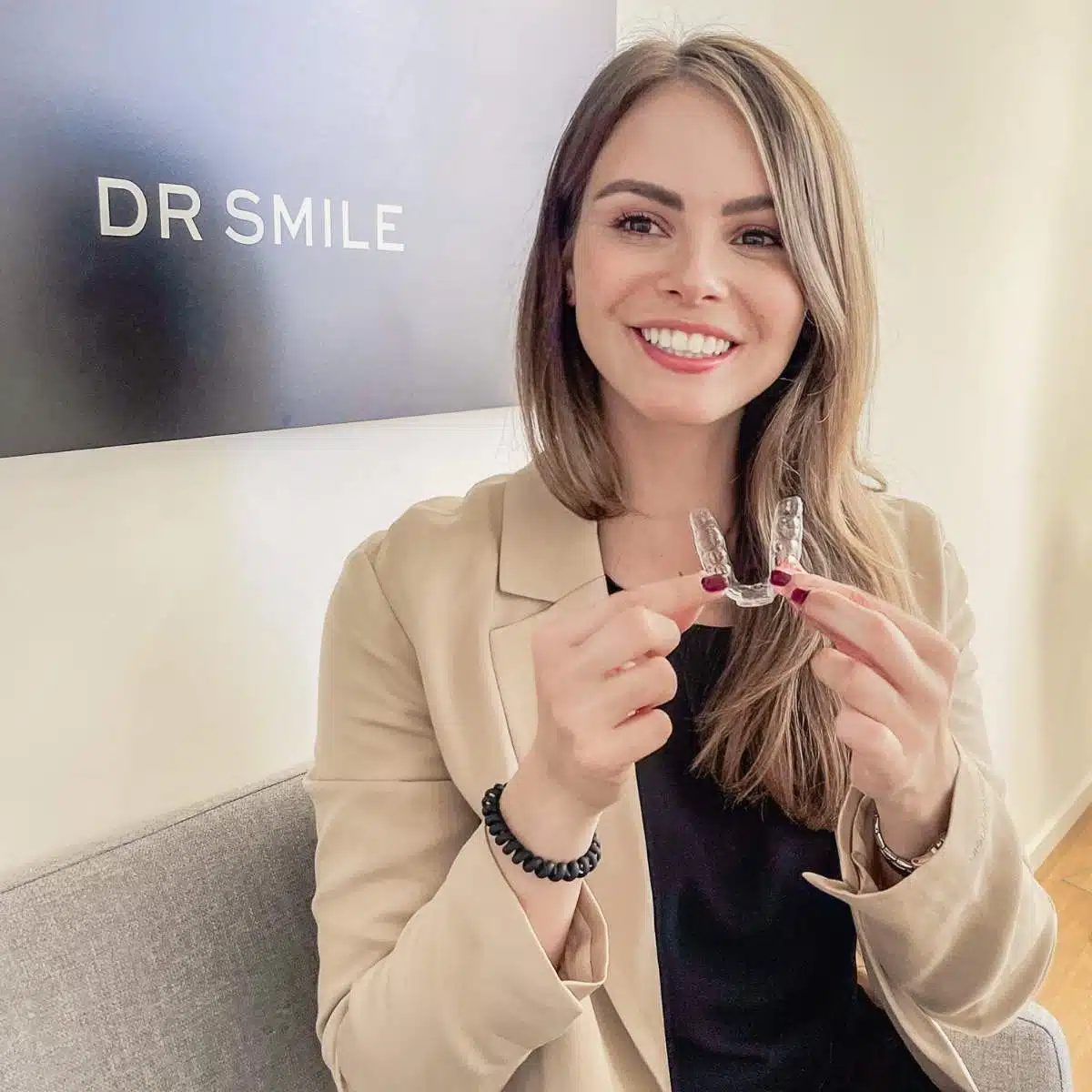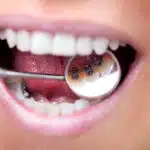This article is all about gum correction: advantages and disadvantages, areas of application and reimbursement of costs.
Healthy, well-formed gums play a crucial role in a beautiful smile and overall dental health.
However, if the gums are uneven, too much or too little gum is visible or if they have receded due to a disease, gum correction (also known as gingivoplasty) can be an effective solution.
In this detailed article, you will learn everything you need to know about gum corrections: what they are, when they are used, how much they cost, what the advantages and disadvantages are and who covers the costs.
| Get 150 € discount on your dental correction! |

Book a consultation appointment now at a nearby DrSmile partner practice and find out if teeth straightening with aligners is right for you.
The appointment is completely non-binding and does not involve any costs.
With the code “THATSMILE150” you will receive 150 € discount on the treatment.
What is a gum correction?
Gum reshaping is a dental surgical procedure in which the gums are reshaped or reconstructed to achieve a more aesthetically pleasing and healthy appearance.
This procedure can be performed in various forms, depending on the problems with the gums.
The most common procedures include removing excess gum tissue, restoring receding gums and adjusting the gum line to create a more harmonious smile.
When is gum correction used?
Gum correction may be necessary for aesthetic or medical reasons. Here are some typical situations in which gum correction is used:
- Gummy smile (gummy smile): If too much gum is visible when smiling, this can detract from the appearance. A gum correction can remove the excess gums and make the smile look more harmonious.
- Uneven gums: If the gum line is uneven, the teeth may appear different lengths. A correction can even out the course of the gums and create a symmetrical appearance.
- Gum recession: If the gums have receded due to periodontitis or other diseases, the roots of the teeth may be exposed, leading to sensitivity and an increased risk of tooth decay. Gum grafting or reconstruction can restore the gums.
- Gum pockets: Severe gum disease can cause deep pockets to form between the tooth and gum where bacteria can colonize. Gum correction can help to reduce these pockets and improve dental health.
- Crown lengthening: When preparing for a dental crown or bridge, it may be necessary to cut back the gums to expose more of the tooth surface.

How does gum correction work?
The course of a gum correction depends on the type of procedure you need. Here is an overview of the most common procedures:
- Gum removal (gingivectomy): During a gingivectomy, excess gum tissue is removed to make the teeth appear longer or to correct a gummy smile. The procedure is usually performed under local anesthesia. The gums are precisely cut and shaped using a scalpel or laser.
- Gum grafting (gingivoplasty): In a gingivoplasty, gum tissue is taken from another part of the mouth, usually the palate, and transplanted to the affected area to restore receded gums. The procedure is also performed under local anesthesia.
- Gum tightening: This procedure is performed to reduce deeper gum pockets caused by periodontitis. The gums are cleaned and reattached to the tooth to create a firmer connection.
- Crown lengthening: Crown lengthening involves cutting back the gum to expose more of the tooth surface before a crown or bridge is placed. This may also require the removal of bone.

How much does a gum correction cost?
The cost of gum correction can vary greatly depending on the type of procedure, the extent of the treatment and the dental practice. On average, the cost is between 300 and 2,500 euros per tooth, depending on the complexity and technique used.
- Gingivectomy: A simple gum removal usually costs between 300 and 600 euros per tooth.
- Gingivoplasty (gum grafting): The cost of a gum graft is often between 600 and 1,500 euros per tooth.
- Crown lengthening: Crown lengthening can cost between 800 and 2,500 euros, depending on the extent of the procedure.
Who covers the costs of gum correction?
The cost of gum correction depends on whether the procedure is performed for aesthetic or medical reasons:
- Statutory health insurance: Statutory health insurance usually only covers the costs if gum correction is medically necessary, e.g. for periodontitis treatment or in preparation for a dental crown. The costs are usually not covered for aesthetic procedures.
- Private health insurance: Depending on the contract, private health insurance companies often cover a larger proportion of the costs, especially if the procedure is carried out for medical reasons. Here too, you should check your individual contract.
- Supplementary dental insurance: If you have supplementary dental insurance, this may cover some or all of the costs of gum correction, depending on the terms of the policy.

Advantages and disadvantages of gum correction
Advantages:
- Aesthetic improvement: Gum correction can significantly improve the smile by harmonizing the gums and creating an even appearance.
- Improved dental health: In the case of a medically necessary correction, the procedure can help to treat or prevent gum disease by reducing bacterial pockets and strengthening the gums.
- Tooth root protection: By restoring receding gums, exposed tooth roots are protected, reducing the risk of tooth decay and tooth sensitivity.
Disadvantages:
- Costs: The costs for a gum correction can be high, especially if the procedure is performed for aesthetic reasons and the insurance does not cover the costs.
- Healing time: After the operation, it may take some time for the gums to heal completely. During this time, you must take special precautions with your oral hygiene and diet.
- Pain and discomfort: While the procedure is usually performed under local anesthesia, there may be some pain and swelling after the operation, but this can be managed with pain medication and good aftercare.
Conclusion: When does gum correction make sense?
Gum correction can be useful for both aesthetic and medical reasons.
If you suffer from uneven gum line, a gummy smile or receding gums, this procedure can improve your smile and protect your dental health in the long term.
It is important to weigh up the pros and cons and seek advice from an experienced dentist to make the best decision for your individual needs.
| Get 150 € discount on your dental correction! |

Book a consultation appointment now at a nearby DrSmile partner practice and find out if teeth straightening with aligners is right for you.
The appointment is completely non-binding and does not involve any costs.
With the code “THATSMILE150” you will receive 150 € discount on the treatment.
FAQs on the subject of gum correction
Here we answer a few of the most frequently asked questions about gum correction.
What is a gum correction?
A gum correction is a dental surgical procedure in which the gums are shaped or reconstructed to correct aesthetic or health problems.
This includes the removal of excess gum tissue, the restoration of receding gums and the alignment of the gum line.
When is gum correction necessary?
Gum correction may be necessary if you suffer from a gummy smile, uneven gums, receding gums or deep gum pockets caused by gum disease.
It can be performed for aesthetic or medical reasons.
Is gum correction painful?
The procedure is usually performed under local anesthesia, so you will not feel any pain during the treatment.
There may be slight pain and swelling after the operation, but this can be alleviated with painkillers and cooling.
Most people report that the pain subsides after a few days.
How long does it take to heal after a gum correction?
The healing time after a gum correction varies depending on the extent of the procedure.
It usually takes around 1 to 2 weeks until the gums have largely healed.
During this time, you should pay attention to gentle oral hygiene and avoid certain foods to support the healing process.
How much does a gum correction cost?
The cost of gum correction depends on the type of procedure and the extent of the treatment.
On average, the costs are between 300 and 2,500 euros per tooth.
The costs can be higher for more extensive procedures.
Does health insurance cover the costs of gum correction?
Statutory health insurance companies only cover the costs of gum correction if the procedure is medically necessary, for example in the treatment of periodontitis.
In the case of purely aesthetic corrections, you usually have to bear the costs yourself.
Private health insurance and supplementary dental insurance may cover part of the costs, depending on the policy.
How does gum correction work?
Depending on the type of correction, the procedure involves removing excess gum tissue, grafting tissue or tightening the gums to reduce deep pockets.
The procedure is performed under local anesthesia and usually takes 30 minutes to an hour per tooth.
What are the risks of gum correction?
As with any surgical procedure, there are risks associated with gum correction, including infection, bleeding or delayed healing.
However, these risks are low and can be minimized with good aftercare and careful oral hygiene.
Your dentist will inform you about possible risks and precautionary measures.
Can I eat and drink normally after a gum correction?
After gum correction, you should stick to soft and cool foods for the first few days so as not to irritate the freshly operated gums.
You should avoid hot, spicy and hard food until the gums have completely healed.
You should also refrain from smoking and drinking alcohol during the healing phase.
How long do the results of a gum correction last?
With good oral hygiene and regular visits to the dentist, the results of gum correction can last for many years, often even a lifetime.
However, if gum disease or other health problems progress, a new treatment may be necessary.



Leave a Reply